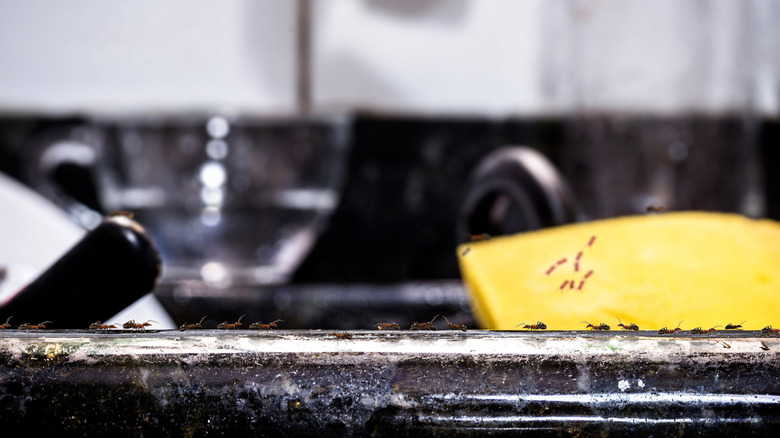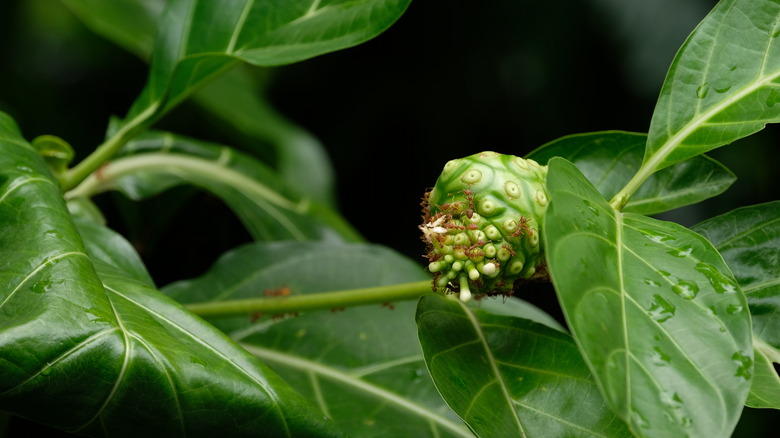Common Foods That Are Most Likely To Attract Fire Ants To Your Home And Garden
"You couldn't stir them with a stick," the old Southern saying goes. Fire ants are so bothersome in the southern states that they gave rise to an oft-used expression for overabundance. A few species of fire ants are highly invasive, overtaking yards and dwellings and posing a health hazard. One thing's for sure: Fire ants rate among the types of bugs you don't want living in your home or backyard. If your home is filled with oily, sugary foods, you might inadvertently invite them in.
There are four species of native fire ant in the U.S., mainly inhabiting the southern and southeastern U.S. Little fire ants are also found in California and Hawaii. Though native ants inflict a painful, sometimes even deadly sting, they're not as problematic as the two invasive species, the red imported fire ant (RIFA or Solenopsis invicta Buren) and black imported fire ant (BIFA or Solenopsis richteri Forel), also found predominantly in the southeast. Recently, the RIFA has found its way to Queensland, Australia.
Fire ants create colonies, sometimes of epic proportions, under visible mounds. They like to live near homes and commercial buildings, which offer ready food and water sources. They're omnivorous and will eat almost anything in times of desperation. However, fire ants have distinct preferences in times of plenty: carbohydrates, proteins, and lipids. A table by Texas A&M AgriLife Extension on ant pest habits notes fire ants prefer "meats, grease, and sweets."
A high-carb diet
In the home, this includes things like bacon fat, cooking oils, cut fruit, sugar products (like syrups and jams), raw meat, and seeds (like sunflower and pumpkin seeds). This is far from an exhaustive list — if you have overflowing trash cans or counters covered in food crumbs, expect these six-legged visitors. Fire ants use various external senses to locate sugary foods. They'll even attempt to extract the oil and sugars found in piles of dirty laundry.
Outside in the garden, they've been known to eat potatoes, okra, corn, sorghum, soybeans, and citrus fruit. The saplings, flower buds, seeds, and developing fruit of almost any plant are fair game to fire ants. They also set up aphid "farms" on vegetable and fruit crops, harvesting the sweet honeydew the insects produce. Ant poison baits also hint at the preferred foods of these harmful pests. Pieces of hot dog, potato chips, sugar syrup, soybean oil (especially combined with corn grits), and peanut butter all offer pest control companies a foolproof way to eliminate fire ants.

